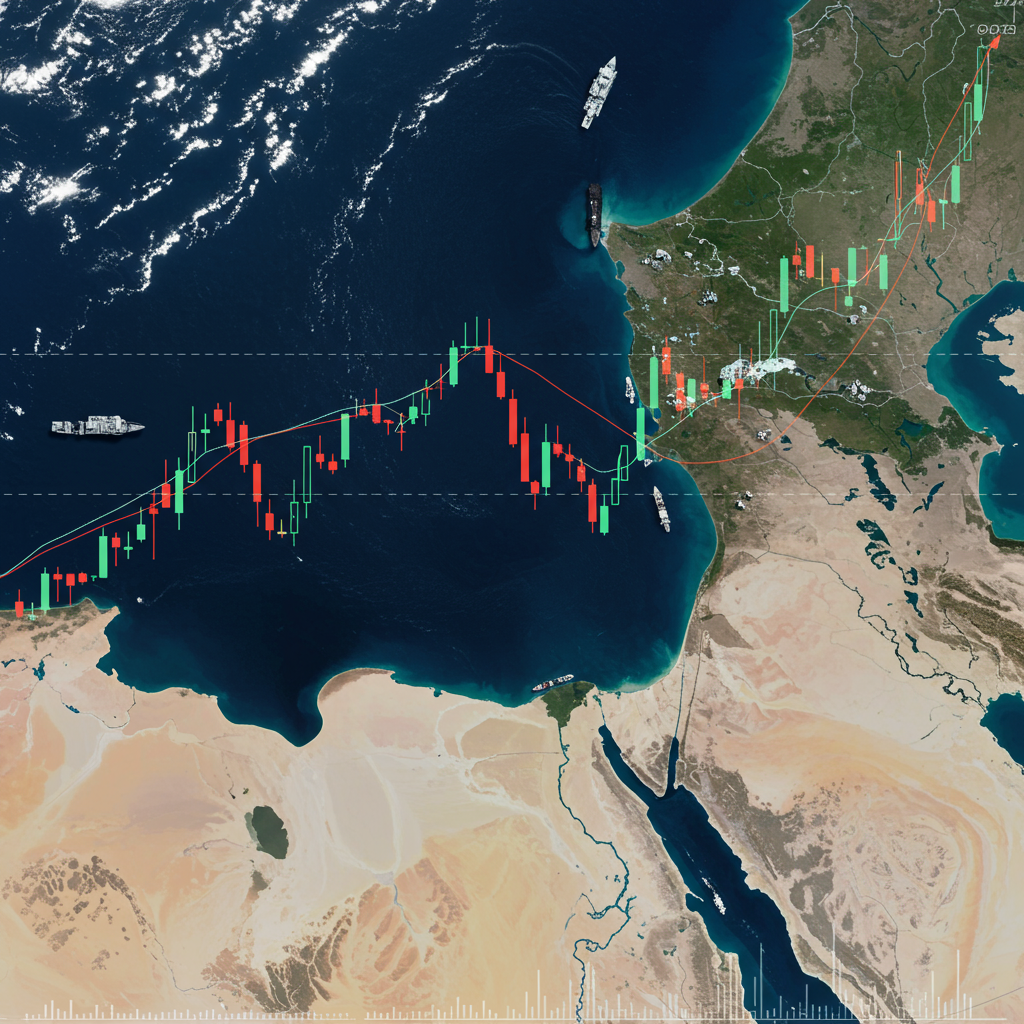Escalating tensions in the Middle East, particularly following recent US and Israeli military actions targeting Iranian nuclear facilities, have reignited global concerns over the security of a vital energy chokepoint: the Strait of Hormuz. This narrow waterway holds immense strategic importance for global energy markets, and analysts are issuing stark warnings about the potential impact on oil prices if Iran were to significantly disrupt traffic through the strait.
The prospect of Iran interfering with transit in the Strait of Hormuz is considered by many experts to be a “worst-case scenario” with potentially devastating economic consequences worldwide. It’s a move Iran’s parliament has reportedly supported, though the final decision rests with the country’s Supreme National Security Council. While Iran has threatened closure before without following through, the current volatile geopolitical climate makes the risk a tangible concern.
How High Could Oil Prices Go? Analyst Forecasts
Financial institutions and energy analysts are modeling various scenarios for potential oil price surges based on different levels of disruption to the Strait of Hormuz.
Goldman Sachs: Analysts at Goldman Sachs, including co-head of global commodities research Daan Struyven, have warned clients that Brent crude prices could spike by 30% from levels seen just after the recent US strikes. In a scenario where oil flows through the Strait of Hormuz are halved for at least one month and then remain down by 10% for a year, Goldman Sachs predicts Brent crude could rise to over $110 per barrel. This would mark the highest price point since July 2022. If a less severe disruption occurs, such as a substantial portion of Iran’s oil supply being removed from the market while the strait remains open, Goldman Sachs estimates prices could peak around $90 a barrel.
JPMorgan Chase: Analysts at JPMorgan project that in a worst-case scenario involving a wider conflict and significant disruption to transit in the Strait of Hormuz, crude prices could surge into the $120-$130 per barrel range.
Other Forecasts: Some analysts suggest temporary spikes could reach $120-$130 per barrel, while others believe prices would “for sure be seeing triple digits.” In prolonged worst-case scenarios, price surges could potentially hit $150 per barrel.
Even a temporary inability to transit this major choke point can cause substantial supply delays and raise shipping costs, directly impacting world energy prices. Current market anxiety is already reflected in rising Brent crude prices, climbing from around $75 to over $80 per barrel recently.
The Critical Importance of the Strait of Hormuz
Located between Iran and Oman, the Strait of Hormuz is widely recognized as the “world’s most critical oil choke point.” Its significance cannot be overstated:
Approximately 20% to 25% of total global oil consumption transits this waterway.
About 20% of global liquefied natural gas (LNG) exports, primarily from Qatar and the UAE, also flow through the strait.
It is the only maritime passage connecting the Persian Gulf, home to major oil producers like Saudi Arabia, UAE, Iraq, Iran, Kuwait, and Bahrain, to the open ocean.
According to the U.S. Energy Information Administration (EIA), unlike some other chokepoints, the Strait of Hormuz has “no practical alternatives” for most of the oil volumes moving through it.
Major Asian economies, including China, India, Japan, and South Korea, are the top destinations for oil moving through the strait, making them particularly vulnerable to any disruption. China alone imports over 1.8 million barrels per day of Iranian oil via this route.
Would Iran Close the Strait? The Risks for Tehran
While Iran possesses military capabilities to disrupt shipping (including fast-attack boats, naval mines, and missiles) and its parliament has voiced support for closing the strait, experts widely believe a complete blockade is a “last resort” and unlikely. A full closure would be “economic suicide” for Iran itself, as it relies heavily on the strait for its own oil exports (around 2.5 million b/d, much of which goes to China). Such a move would also damage crucial relationships with major trading partners like China and neighboring Arab states, and almost certainly risk a significant military response, likely led by the United States.
US officials have publicly warned against such a move, calling it “economic suicide” for Iran and urging countries like China to discourage Tehran from proceeding.
Broader Economic Repercussions
Beyond direct price spikes, a disruption in the Strait of Hormuz would send shockwaves through the global economy, exacerbating existing concerns:
Inflation: Higher oil prices directly impact headline inflation. Estimates suggest every $10 increase in the price of oil could translate to a half-percentage-point increase in the headline inflation rate. JPMorgan analysts warned that a full blockade could push US inflation towards 5%. While some analysts argue the impact on core inflation (excluding energy) might be minimal and the resulting economic slowdown could even give central banks reason to cut interest rates, the immediate effect on consumer costs would be significant.
Supply Chains & Shipping: Disruption would cause substantial supply delays, dramatically increase shipping insurance premiums, and raise freight costs across all trade sectors, ultimately increasing costs for consumers worldwide. Rerouting tankers around the Cape of Good Hope would add significant time and expense.
Regional Impact: The impact varies significantly. The UAE is somewhat better prepared due to its Abu Dhabi Crude Oil Pipeline offering an alternative export route (1.8 million b/d capacity), though it cannot fully replace the strait for the UAE’s 3.3 million b/d exports. Saudi Arabia has an East-West pipeline with potential to reroute up to 5 million b/d. However, countries like Kuwait and Iraq are more vulnerable. Qatar, a major LNG exporter, would face significant delays. Asia has the most to lose, facing potential fuel shortages and economic disruption. East African nations importing fuel via the strait would also be immediately affected.
Mitigation Efforts and Readiness
In response to rising tensions, countries hold Strategic Petroleum Reserves (SPRs) as a buffer, with the US, Europe, and Asia possessing substantial volumes. However, these reserves offer only short-term relief and cannot resolve a sustained crisis. The United States has also increased its military presence in the region to enhance maritime security and safeguard commerce, redirecting carrier strike groups to the area.
As of now, the Strait of Hormuz remains open, but the geopolitical climate is fragile. The market is closely watching for any indication that Iran might decide to “weaponize oil” and disrupt this essential artery of global energy trade, a move with profound implications for prices, inflation, and economic stability worldwide.




